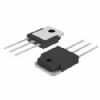TS271: Features: ·Offset null capability (by external compensation)· Dynamic characteristics adjustable ISET· Consumption current and dynamic parameters are stable regarding the voltage power supply varia...
floor Price/Ceiling Price
- Part Number:
- TS271
- Supply Ability:
- 5000
Price Break
- Qty
- 1~5000
- Unit Price
- Negotiable
- Processing time
- 15 Days
SeekIC Buyer Protection PLUS - newly updated for 2013!
- Escrow Protection.
- Guaranteed refunds.
- Secure payments.
- Learn more >>
Month Sales
268 Transactions
Payment Methods
All payment methods are secure and covered by SeekIC Buyer Protection PLUS.

 TS271 Data Sheet
TS271 Data Sheet








